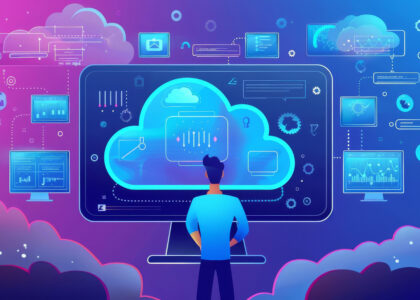Modernization projects go through phases, and after the initial planning and assessment phase, you have now identified the need. You have assessed the existing systems, processes, and technologies.
It is time for the next phase – preparation and implementation. You know what you want to do, now it is time to make it so. To gain buy-in from the stakeholders and help guide you through this phase, you need a roadmap. Not just for the technical side but to lay out the business case. This will define the outcomes and help to quantify the expected benefits.
Here are the key principles for building a business case:
- Alignment with the organization’s strategic goals: Show how the modernization project contributes to the overarching strategy and objectives of the organization.
- Risk assessment: Identify and explain potential risks and mitigation strategies for the project.
- Describe the benefits and ROI (Return on Investment): Benefits typically fall into these buckets: Cost savings, greater efficiencies, revenue generation, and customer satisfaction. What metrics will be used to measure the outcomes and benefits? The ROI will demonstrate the financial viability of the project.
- Stakeholder support: Secure buy-in and feedback from stakeholders throughout the organization, including cross-functional departments.
Keep the above principles in mind as you develop your business case. It should include the objectives and scope of the project, and a cost-benefit analysis discussing the tangible and intangible benefits. The business case document should also discuss the potential risks and mitigation plans, the project timeline, resource requirements, and budget, and get all the necessary approvals and signoffs.
The business case is your roadmap as you begin your modernization journey. The plans include the following primary areas:
- System design and development: This encompasses what the new architecture and functionalities will look like.
- Data migration: The primary purpose is to ensure the compatibility and integrity of the data and metadata within your ecosystem. It involves data cleansing, transformation, and the transfer to the new system.
- Testing and integration: The new system needs to be tested throughout the installation and deployment. Integrations with other software systems should be rigorously tested.
- Deployment and training: Initial deployment of the new system should be in a controlled environment to facilitate system and user acceptance testing. Once established, tested, and validated, the system is ready to roll out. Comprehensive training in the new processes and functionality for users and administrators is required. Adding feedback loops to adjust for usability and user satisfaction helps speed adoption.
With the plans and roadmap in place, you are ready for implementation and deployment. Continue to monitor project progress, adjusting as you go.
All of the above seems simple, practical, and straightforward. Inevitably, there will be the gotchas that sneak up and surprise you. If you have a team that works well together, knows how to collaborate, and even has fun, it will go more smoothly. Sometimes you might want to bring in modernization mavens to get your project off the ground. Using experts, like Risetime, can help your project move forward faster with the confidence of people who have done it before and know how to make this modernization thing work for you and deliver the desired outcomes.






